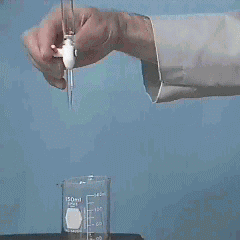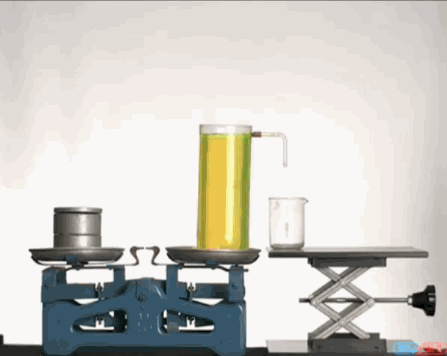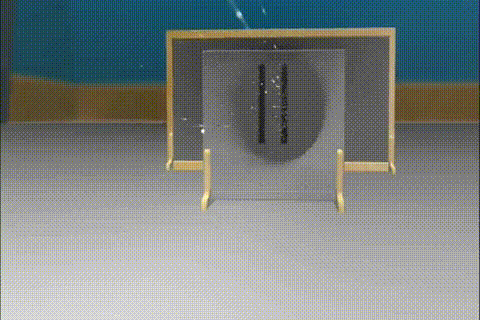Courses
Mechanics
Course Description
Mechanics is a calculus-based introduction to classical mechanics, including topics ranging from measurement to gravitational forces and oscillations. This course is designed to provide students with a working knowledge of these elementary physics principles, as well as their applications, and to enhance their conceptual understanding of physical laws. The introduction of data acquisition and analysis methods will be stressed in a laboratory setting.
Lecture videos can be found on my YouTube page [link], or by clicking the links for each chapter below. In the past, I used the free text "University Physics Volume 1" by OpenStax, found here [link].
Lectures
- Chapter 1 - Measurement PDF - videos: [sec1] [sec2] [sec3] [sec4]
- Chapter 2 - Vectors PDF - videos: [sec1] [sec2] [sec3]
- Chapter 3 - Motion in 1D PDF - videos: [sec1] [sec2] [sec3] [sec4]
- Chapter 4 - Motion in 2D/3D PDF - videos: [sec1] [sec2] [sec3] [sec4]
- Chapter 5 - Force and Motion PDF - videos: [sec1] [sec2] [sec3]
- Chapter 6 - Friction PDF - videos: [sec1] [sec2] [sec3]
- Chapter 7 - Work and Kinetic Energy PDF - videos: [sec1] [sec2] [sec3] [sec4]
- Chapter 8 - Potential Energy PDF - videos: [sec1] [sec2] [sec3] [sec4]
- Chapter 9 - Momentum PDF - videos: [sec1] [sec2] [sec3] [sec4]
- Chapter 10 - Rotational motion PDF - videos: [sec1] [sec2] [sec3] [sec4]
- Chapter 11 - Angular momentum PDF - videos: [sec1] [sec2] [sec3]
- Chapter 12 - Equilibrium PDF - videos: [sec1] [sec2] [sec3]
- Chapter 13 - Gravitation PDF - videos: [sec1] [sec2] [sec3]
- Chapter 15 - Oscillations PDF - videos: [sec1] [sec2] [sec3] [sec4]
- Chapter 16 - Waves PDF - videos: [sec1] [sec2] [sec3]
Homework Assignments
- Ch 1 Assignment PDF
- Ch 2 Assignment PDF
- Ch 3 Assignment PDF
- Ch 4 Assignment PDF
- Ch 5 Assignment PDF
- Ch 6 Assignment PDF
- Ch 7 Assignment PDF
- Ch 8 Assignment PDF
- Ch 9 Assignment PDF
- Ch 10 Assignment PDF
- Ch 11 Assignment PDF
- Ch 12 Assignment PDF
- Ch 13 Assignment PDF
- Ch 15 Assignment PDF
- Ch 16 Assignment PDF
Practice Exams

Motion of a Pendulum
When a pendulum swings back and forth, its velocity and acceleration are constantly changing. Pay close attention to when (and where) the velocity goes to zero. Notice that the acceleration is maximum at this moment. Also, notice that the acceleration is not necessarily in the direction of motion!Electricity and Magnetism
Course Description
Electricity and Magnetism is a calculus-based introduction to classical electricity and magnetism, including topics ranging from electric charge to electromagnetic oscillations. This course is designed to provide students with a working knowledge of these elementary physics principles, as well as their applications, and to enhance their conceptual understanding of physical laws. The introduction of data acquisition and analysis methods will be stressed in a laboratory setting.
Lecture videos can be found on my YouTube page [link], or by clicking the links for each chapter below. In the past, I used the free text "University Physics Volume 2" by OpenStax, found here [link].
Lectures
- Chapter 5.1 - Electric Charge PDF - videos: [sec1] [sec2] [sec3]
- Chapter 5.2 - Electric Fields PDF - videos: [sec1] [sec2] [sec3] [sec4]
- Chapter 6 - Gauss's Law PDF - videos: [sec1] [sec2] [sec3]
- Chapter 7 - Electric Potential PDF - videos: [sec1] [sec2] [sec3]
- Chapter 8 - Capacitance PDF - videos: [sec1] [sec2] [sec3] [sec4] [sec5]
- Chapter 9 - Current and Resistance PDF - videos: [sec1] [sec2] [sec3] [sec4]
- Chapter 10 - Circuits PDF - videos: [sec1] [sec2] [sec3] [sec4]
- Chapter 11 - Magnetic Fields PDF - videos: [sec1] [sec2] [sec3] [sec4]
- Chapter 12 - Magnetic Fields from Currents PDF - videos: [sec1] [sec2] [sec3] [sec4]
- Chapter 13 and 14 - Induction and Inductance PDF - videos: [sec1] [sec2] [sec3] [sec4]
- Chapter 15 - Electromagnetic Oscillations PDF - videos: [sec1] [sec2] [sec3] [sec4] [sec5]
- Chapter 16 - Maxwell's Equations PDF - videos: [sec1] [sec2] [sec3]
Homework Assignments
- Ch 5.1 Assignment PDF
- Ch 5.2 Assignment PDF
- Ch 6 Assignment PDF
- Ch 7 Assignment PDF
- Ch 8 Assignment PDF
- Ch 9 Assignment PDF
- Ch 10 Assignment PDF
- Ch 11 Assignment PDF
- Ch 12 Assignment PDF
- Ch 13 Assignment PDF
- Ch 14 Assignment PDF
- Ch 15 Assignment PDF
- Ch 16 Assignment PDF
Practice Exams

Polarization of Water
When electrons are exchanged between the wool and plastic rod, they separate with equal but opposite net charge. When the rod is brought near a stream of neutral water, we see the water deflect toward the rod. In fact, this would happen even if we instead brought the wool close. The water seems to be attracted to all charged objects! This is due to polarization, i.e., the redistribution of charges in an object resulting in a net force.Fluids and Thermal Physics
Course Description
Fluids and Thermal Physics is a calculus-based introduction to the basic concepts of fluids and sound, heat, kinetic theory, and entropy. This course is designed to provide students with a working knowledge of these elementary physics principles, as well as their applications, and to enhance their conceptual understanding of physical laws. The introduction of data acquisition and analysis methods will be stressed in a laboratory setting. The class meets for a one hour lecture and a two hour recitation/lab each week.
In the past, I used the free texts "University Physics Volume 1" [link] and "University Physics Volume 2" [link] by OpenStax. Note that the material below comes from two different volumes, as indicated.
Lectures
- Chapter 14 (V1) - Fluids PDF
- Chapter 16 (V1) - Waves I PDF
- Chapter 17 (V1) - Waves II PDF
- Chapter 1 (V2) - Temperature and Heat PDF
- Chapter 2 (V2) - Kinetic Theory of Gases PDF
- Chapter 3 (V2) - First Law of Thermodynamics PDF
- Chapter 4 (V2) - Second Law of Thermodynamics PDF
Homework Assignments
- Ch 14 Assignment PDF
- Ch 16 Assignment PDF
- Ch 17 Assignment PDF
- Ch 1 Assignment PDF
- Ch 2-3 Assignment PDF
- Ch 4 Assignment PDF
Practice Exams

Buoyancy and Displacement
When an object is placed in a fluid, how do we know if it will float or not? And, if it floats, how high above the water will it float? To answer these questions, we must understand buoyancy and displacement. This demonstration seems to indicate that the amount of fluid displaced is related to the mass of the floating object.Wave Motion and Quantum Physics
Course Description
Wave Motion and Quantum Physics is a calculus-based study of the basic concepts of wave motion, geometrical optics, interference phenomena, photons, wave mechanics, and the structure of matter. This course is designed to provide students with a working knowledge of these elementary physics principles, as well as their applications, and to enhance their conceptual understanding of physical laws. The introduction of data acquisition and analysis methods will be stressed in a laboratory setting. The class meets for a one hour lecture and a two hour recitation/lab each week.
Lecture videos can be found on my YouTube page, or by clicking the links for each chapter below. In the past, I used the free text "University Physics Volume 3" by OpenStax, found here [link].
Lectures
- Chapter 1 - The Nature of Light PDF - videos: [sec1] [sec2] [sec3]
- Chapter 2 - Geometric Optics PDF - videos: [sec1] [sec2] [sec3]
- Chapter 3 - Interference PDF - videos: [sec1] [sec2]
- Chapter 4 - Diffraction PDF - videos: [sec1] [sec2]
- Chapter 6 - Photons/Matter Waves PDF - videos: [sec1] [sec2]
- Chapter 7 - Quantum Mechanics PDF - videos: [sec1] [sec2] [sec3]
- Chapter 8 - Atomic Structure PDF - videos: [sec1] [sec2]
- Chapter 9 - Condensed Matter Physics PDF [sec1] [sec2] [sec3]
- Chapter 10 - Nuclear Physics PDF [sec1] [sec2] [sec3] [sec4]
Homework Assignments
Homework assignments are taken from the book and are listed in the syllabus on Canvas.
Practice Exams
